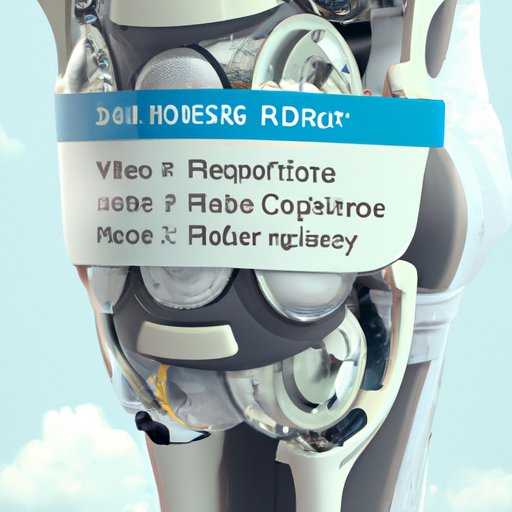Introduction
Robotic knee surgery is a minimally invasive procedure that uses computer-assisted technology to perform knee replacements. During the operation, the surgeon uses a robot to precisely cut and shape the bone and implant the new joint. The robot can measure the patient’s anatomy in real-time and make adjustments if necessary. This technology has been proven to reduce the risk of complications and improve the accuracy of the surgery. However, there are certain drawbacks to consider before undergoing robotic knee surgery.

Cost of Robotic Knee Surgery
One of the main disadvantages of robotic knee surgery is the cost. The technology used for robotic knee surgery is expensive, and it can be difficult for patients to afford. According to a study by the American Academy of Orthopaedic Surgeons (AAOS), robotic knee surgery costs around $25,000, which is significantly more than the average cost of a traditional knee replacement ($15,000). Additionally, insurance companies may not cover all of the costs associated with this type of surgery.
Limited Range of Motion
Robotic knee surgery can also lead to a limited range of motion. While the robot can accurately place the implant, the procedure can still be quite invasive. This means that the patient may experience stiffness and a lack of flexibility in their new joint. In some cases, a second surgery may be required to further improve the range of motion.
Risk of Complications
Robotic knee surgery carries a risk of complications just like any other surgical procedure. These include infection, blood clots, nerve damage, and implant failure. A study published in the journal Clinical Orthopaedics and Related Research found that robotic knee surgery had a higher rate of complications compared to traditional knee replacements. It is important to weigh the risks and benefits of robotic surgery before proceeding.
Long Recovery Period
Another disadvantage of robotic knee surgery is the long recovery period. Patients typically need to wear a brace for several weeks following the procedure and must undergo physical therapy to strengthen the muscles around the new joint. The pain and discomfort associated with this process can be significant and can last for several months. It is important to follow your doctor’s instructions and attend all physical therapy sessions in order to maximize the chances of a successful recovery.
Difficulty Adjusting to the New Knee
It can take time for patients to adjust to their new knee after robotic surgery. The joint may feel stiff and uncomfortable at first, and patients must learn to walk with a new gait. There is also the potential for further injury or instability if the patient does not learn to use the new joint properly. Physical therapists can help patients adjust to their new body mechanics and avoid further injury.
Unpredictability of Outcome
Robotic knee surgery can produce variable results. While the robot can accurately place the implant, it cannot predict how the patient will respond to the new joint. Some patients may find that their new knee provides relief from pain and improved mobility, while others may find that the pain persists or worsens. It is important to discuss the potential outcomes with your doctor before deciding on robotic surgery.
Lack of Personalized Care
Finally, robotic knee surgery lacks the personalized care provided by a surgeon. The robot is programmed to perform the surgery according to pre-determined parameters, which may not be optimal for each individual patient. Surgeons are able to make adjustments on the fly during traditional surgery, which is not possible with robotic procedures. For this reason, it is important to seek professional advice before deciding on robotic knee surgery.
Conclusion
Robotic knee surgery offers several advantages, such as improved accuracy and reduced risk of complications. However, there are also some potential disadvantages to consider. These include the cost, limited range of motion, risk of complications, lengthy recovery period, difficulty adjusting to the new knee, unpredictability of outcome, and lack of personalized care. It is important to consider all of these factors before deciding whether robotic knee surgery is right for you.
(Note: Is this article not meeting your expectations? Do you have knowledge or insights to share? Unlock new opportunities and expand your reach by joining our authors team. Click Registration to join us and share your expertise with our readers.)
